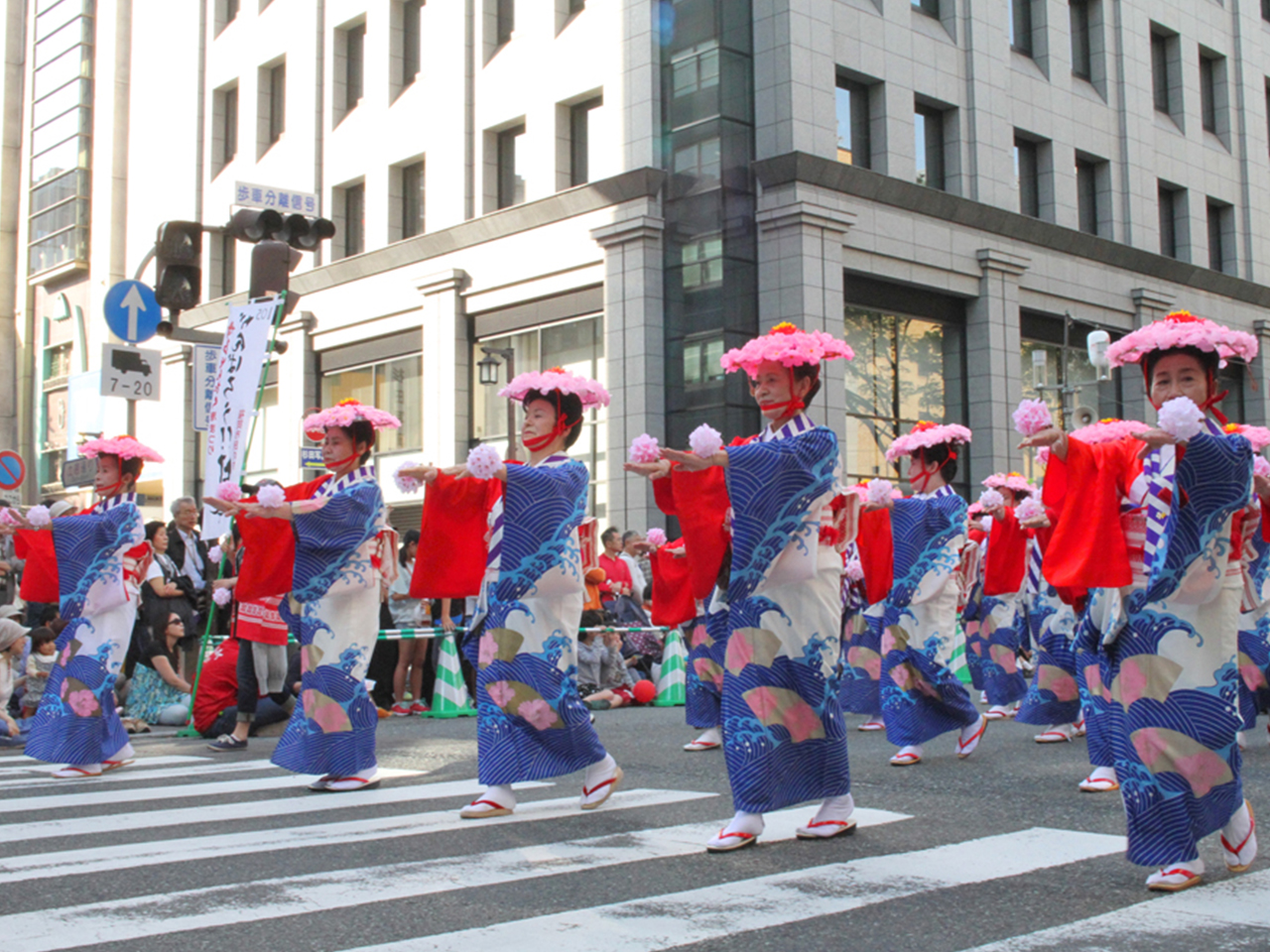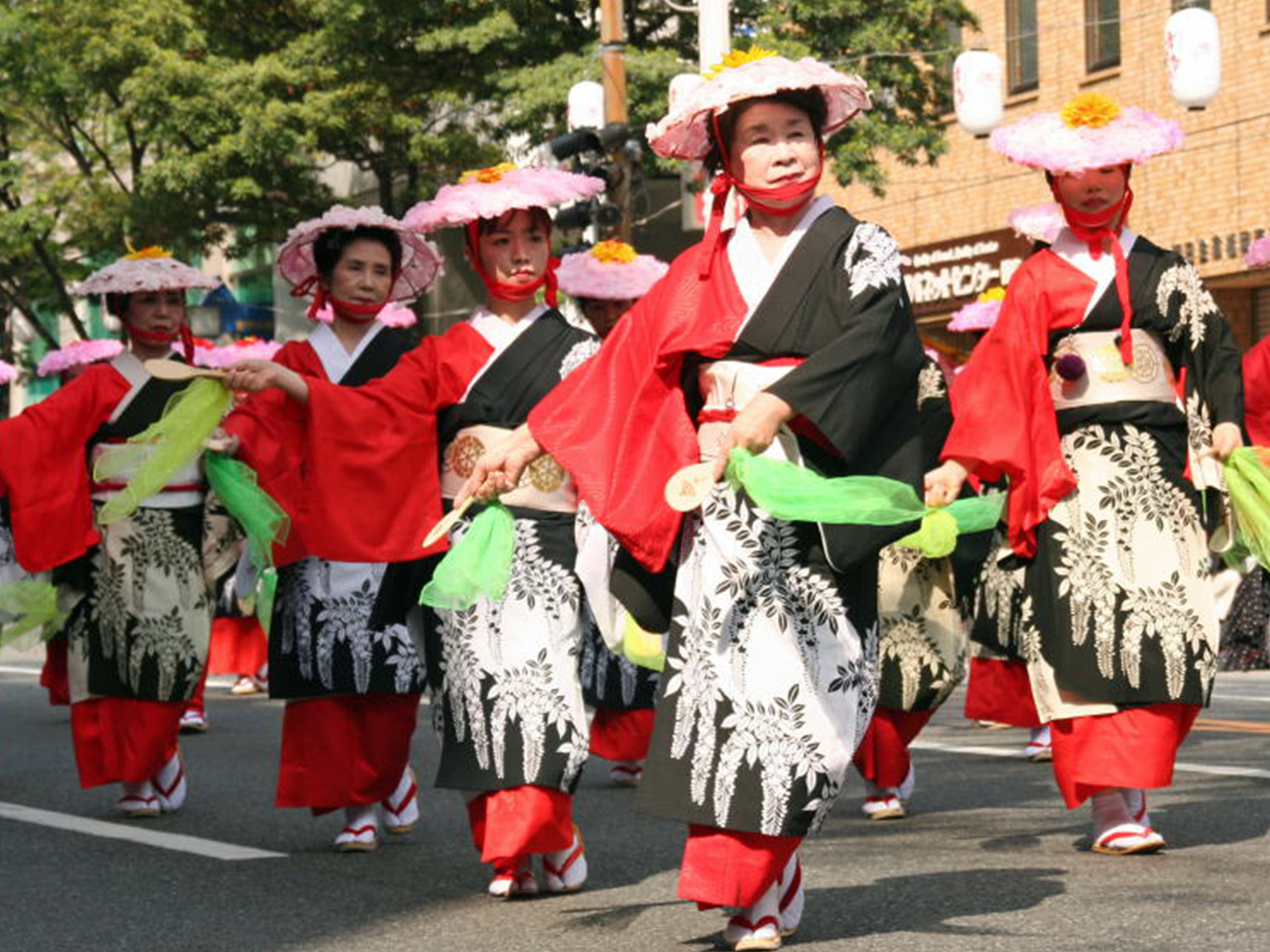Supporting Organizations
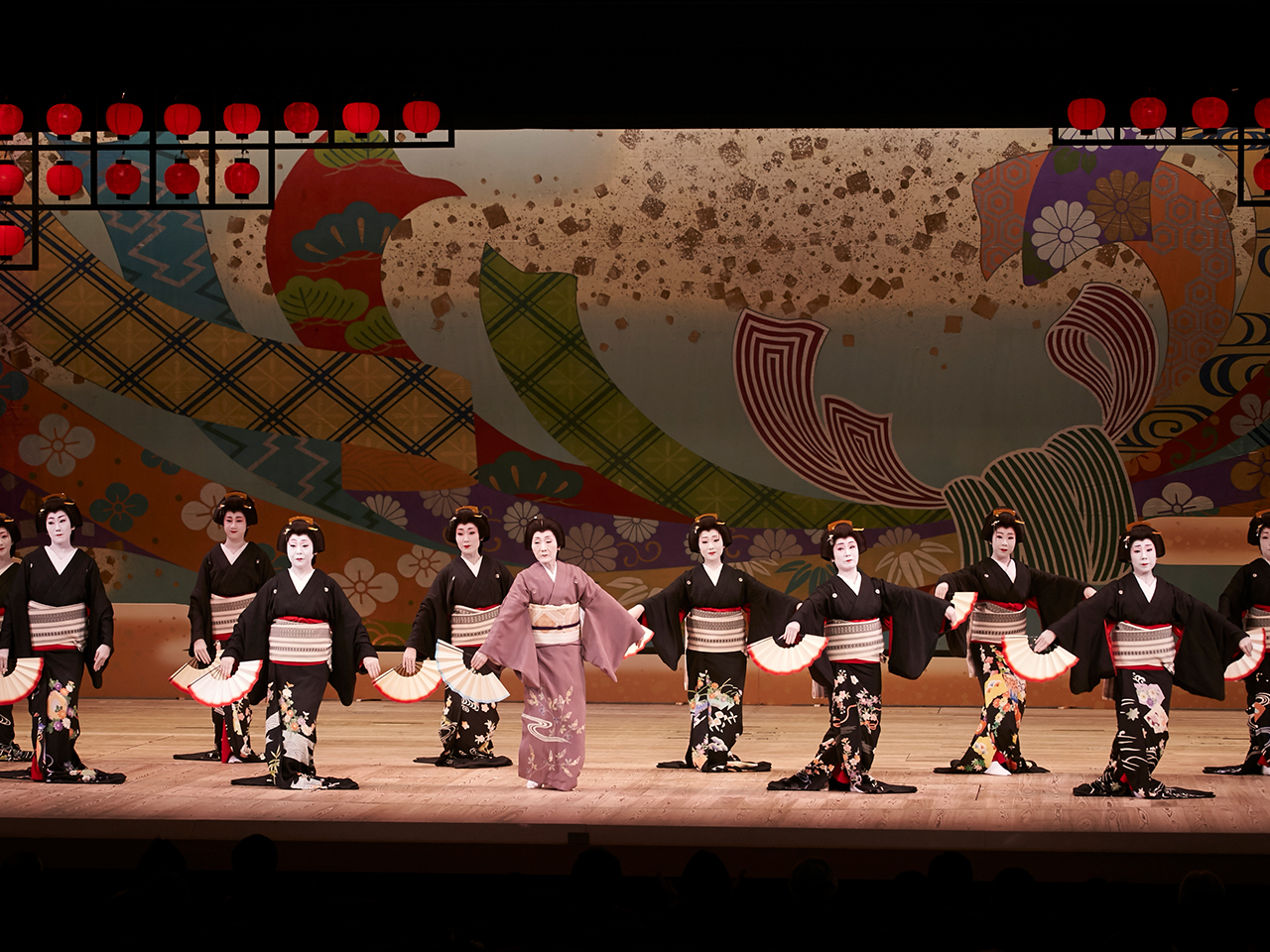
- Hakata Geigi
-
It is said that the geigi appeared in Hakata in the middle of the Edo period. In those days, geigi from Osaka were invited to tea houses in Nagasaki to entertain customers. However, as their stay in Nagasaki was limited to no more than 100 days, they would then temporarily move to Hakata to earn money and then return to Nagasaki again. Some of them settled in Hakata and it is said that these settlers became the roots of the Hakata geigi.
During the Meiji and Taisho eras, Hakata geigi were famous for their generous, open character. In the past, more than 2,000 geigi were registered with the Hakata Kenban. With the changing times, this number has decreased and today only 14 geigi are currently registered.
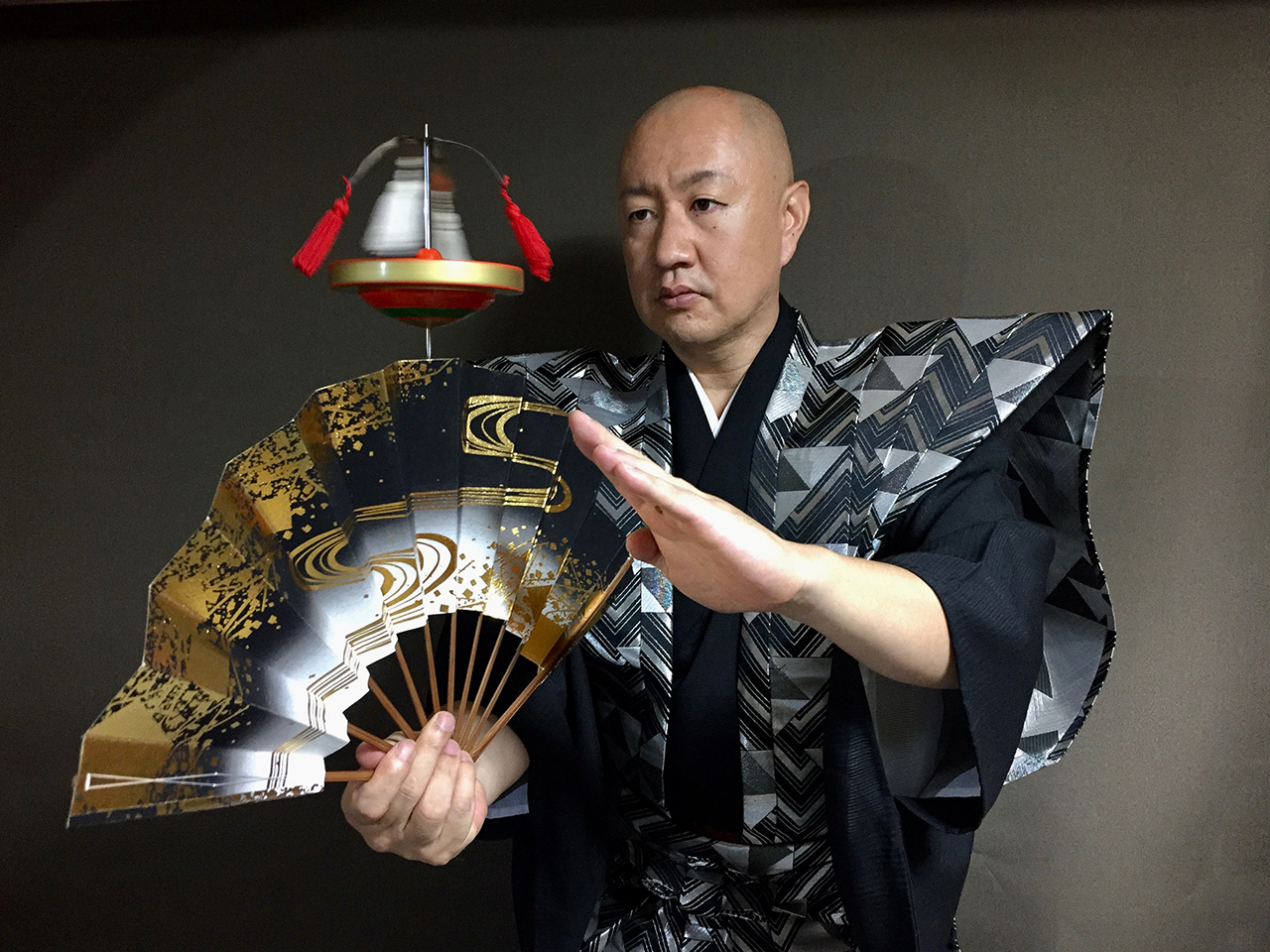
- Chikuzen’s Hakata Koma (traditional spinning tops)
-
The Hakata Koma is a juggling performance that has a history of more than 450 years. It was an imperial-honored performance loved by both emperors and shoguns.
The Hakata koma is a top containing an iron core originating in the latter half of the 17th century, early in the Edo era. The Hakata koma rotates with stability and can be moved about on the palm of the hand.
Chikuzen’s Hakata koma is a traditional, juggling performing art that has been handed down through 20 generations and has been designated as the number one intangible cultural property of Fukuoka Prefecture.
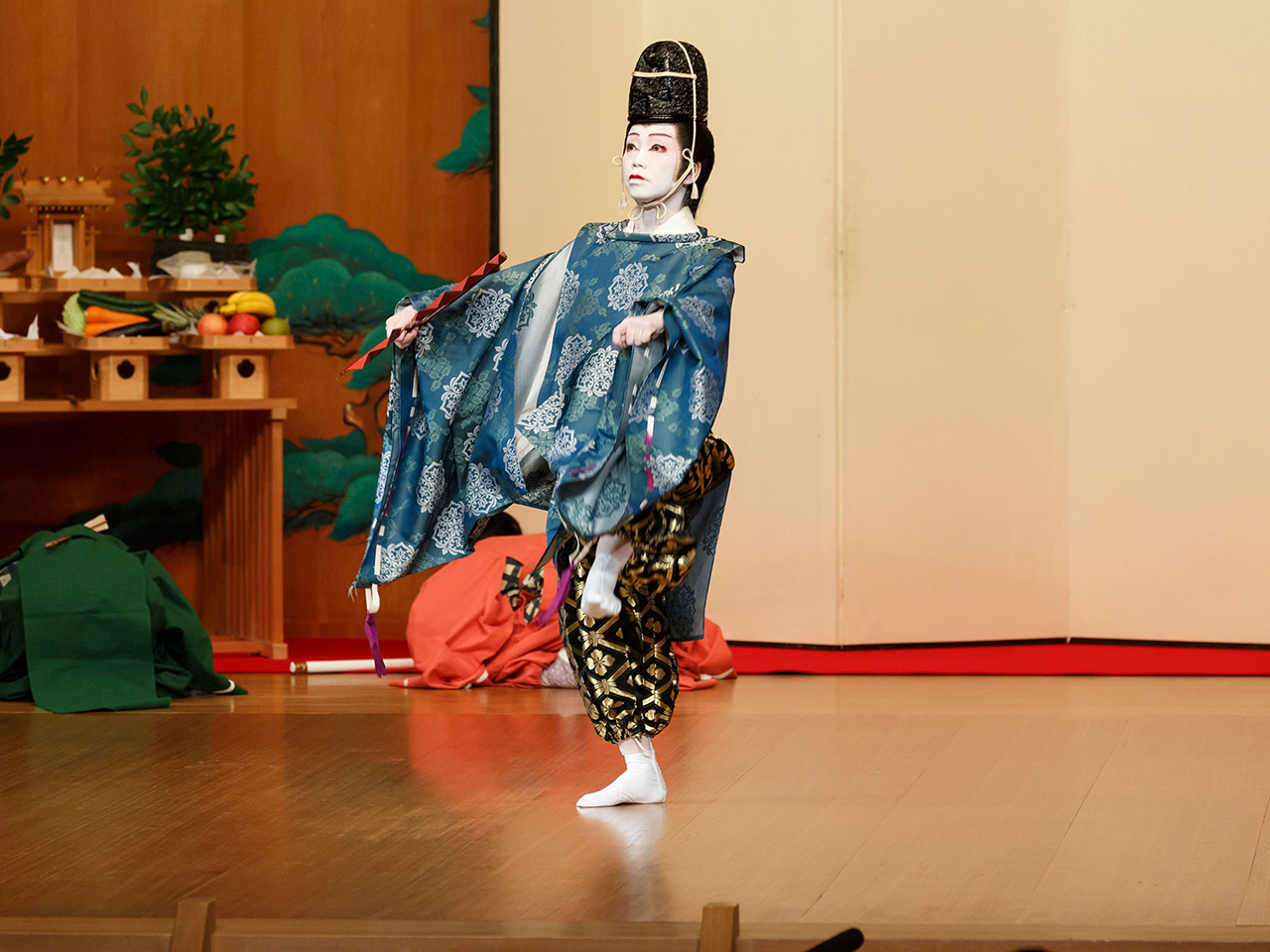
- Tsukushimai (local traditional dance)
-
The Tsukushimai dance originated in Kyushu, and the name “Tsukushimai” is noted in the literature of more than a thousand years ago. It is roughly divided into Kanmai, a dance style dedicated to Japanese Shinto deities, and Kugutsumai, a dance style to entertain people. Over two hundred pieces of music have been handed down. The Tsukushimai dance is characterized by a majestic performance of sliding feet, combined with dynamic dancing involving the dancer’s leaps and tapping of the feet. Along with the dance itself, many of its related oral traditions have attracted attention academically.
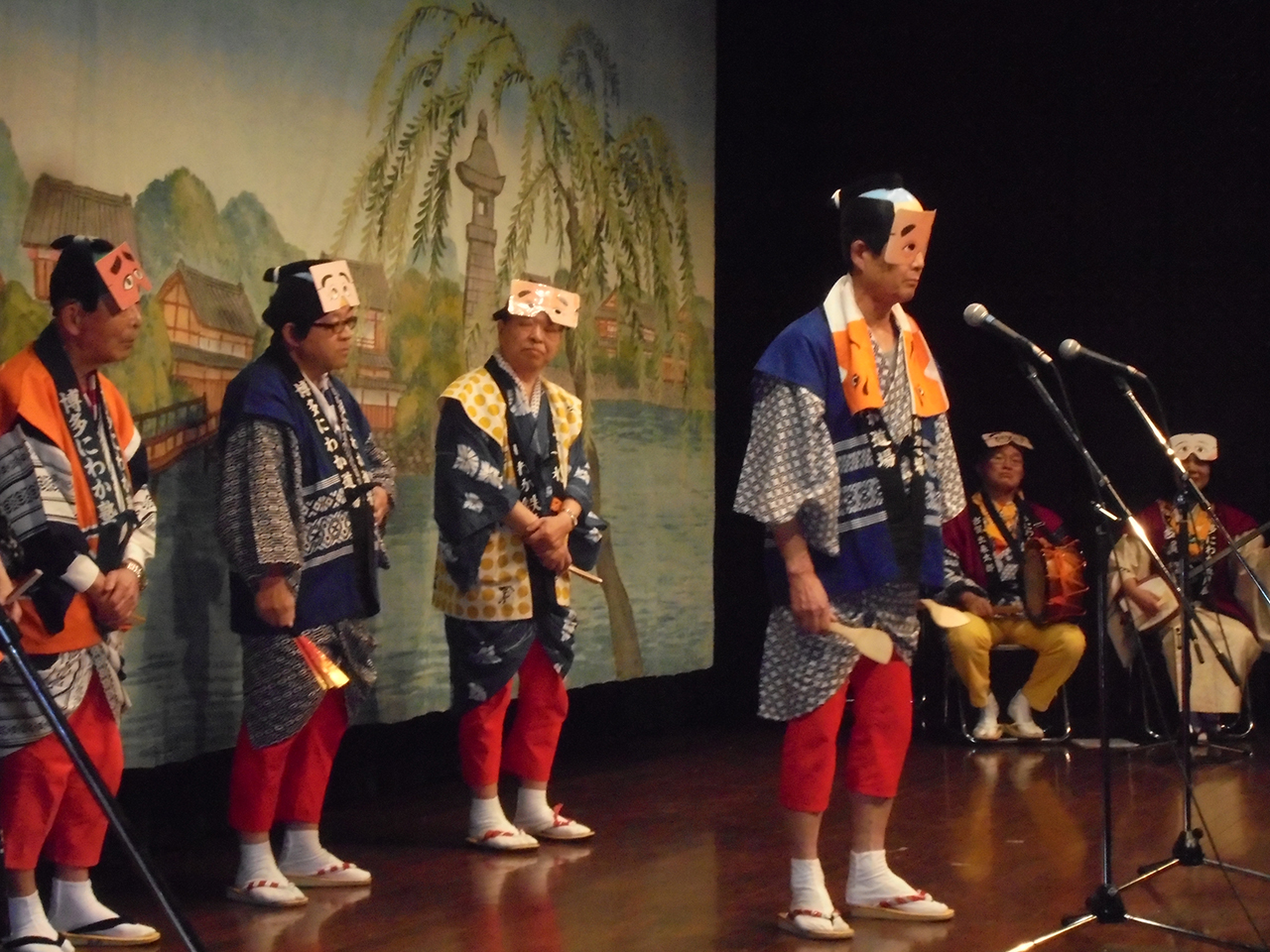
- Hakata Niwaka Promotion Association
-
Hakata Niwaka is a local comical form of entertainment with a long history and tradition. It has been designated as an intangible folk cultural property of Fukuoka City. Performers wear half-faced masks called niwakamen and speak in a Hakata dialect with traditional impromptu comical dialogue that ends with a punch line. Hakata Niwaka is a type of improvisational humorous conversational or dramatized performance whose themes reflect the societal conditions of the time.

- Hakata Matsubayashi Promotion Association
-
Hakata Matsubayashi is a folk festival that involves children and three Shinto gods, Fukujin, Ebisu, and Daikoku. It is the origin of Hakata Dontaku, a festival held annually in Fukuoka. On the day of the festival, a Hakata Matsubayashi procession walks through town in celebration. It is also designated as a selected intangible folk cultural property of Japan.
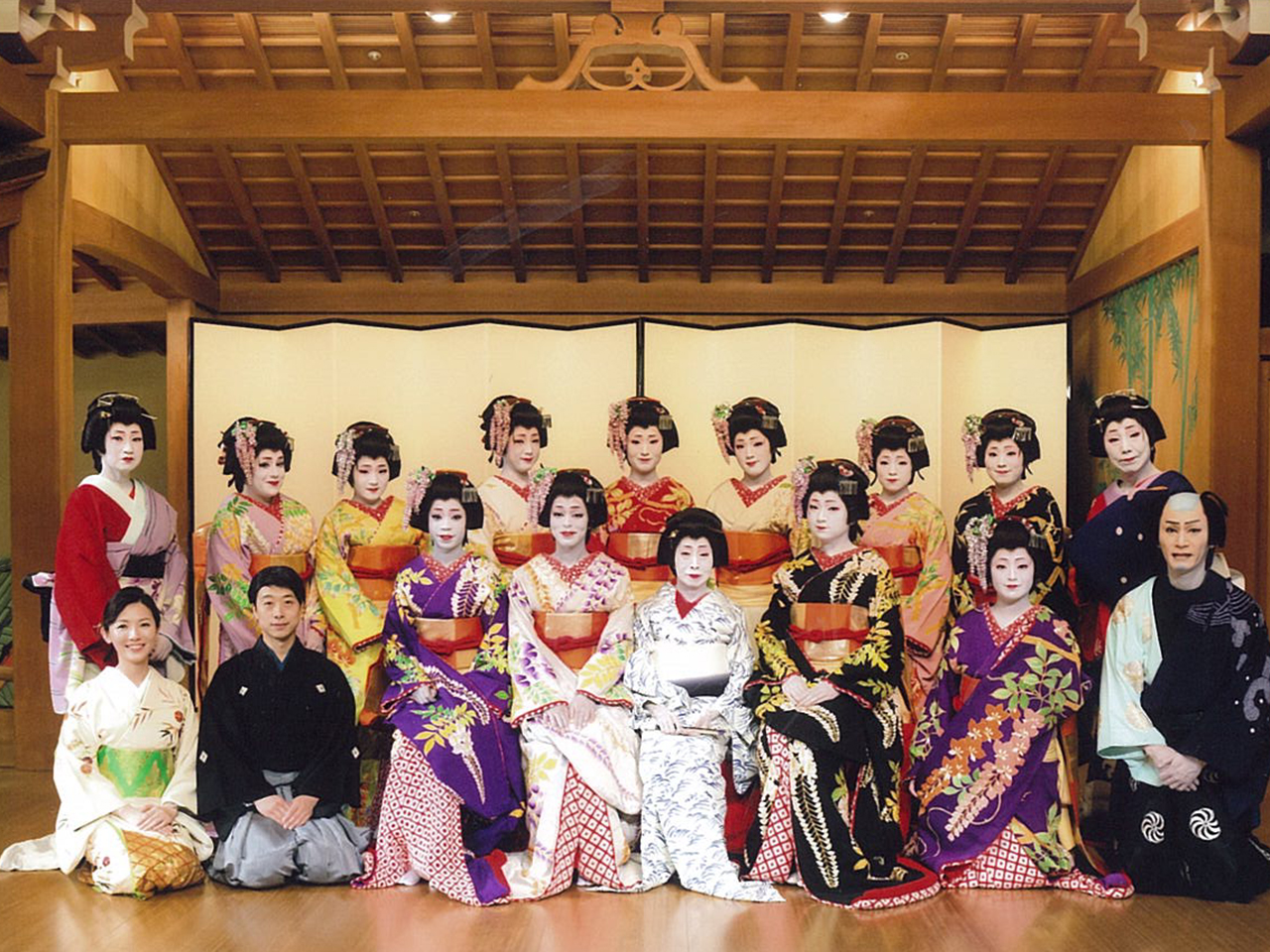
- Koi-no-kai International Cultural Exchange
-
Kyushu Center of Japan Inter Culture
The Koi-no-kai International Cultural Exchange accepts consuls, international students, overseas classical dancers, and Japanese students as trainees. It provides them with information on the tradition and creation of Japanese culture through Japanese classical dances and deepens international exchange and mutual understanding.
Traditional Dance Organizations
- Hakata Traditional Dance Association

- Fukuoka Shiki-no-kai Traditional Dance Group
